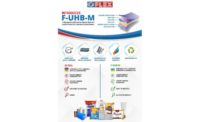Case-ready products have experienced a shift with the once rapidly growing modified-atmosphere packaging (MAP) segment losing market share to vacuum packaging. In fact, the report estimates MAP market share slipped about five points to 13 percent in 2013 and vacuum packaging rose considerably to about 18 percent. The report attributes the shift to consumer preference for the familiar overwrapped tray packaging long used by retailers, which tends to be equated with freshness, and a perception that MAP packaging looks “mass-produced.” The report estimates the lion’s share of the case-ready segment remains with overwrap with polyvinyl chloride holding 40 percent and stretch overwrap at 25 percent. Other formats account for the remaining 4 percent.
Growth areas include single-serve portions and products with convenience features. Demand for convenience products crosses virtually all demographic groups, including younger consumers who are on the go and may not have developed cooking skills; older consumers, who want easy meal prep; and parents, who need to feed themselves and the kids despite hectic work/school/activity schedules.
As a result, sales of branded refrigerated meats and meals are rising steadily. A study published by Packaged Facts, “Branded Refrigerated Meats and Meals: U.S. Market Trends,” predicts sales of these products will rise from $25 billion in 2013 to $31 billion in 2018. Flexible packaging is well-represented in this category with pouches, bags and overwrapped or lidstock-sealed trays with easy-open/reclose features such as peelable seals, cook-in capability and built-in marinade/ingredient delivery compartments.
Whether packaging fresh meat or a prepared meal, the barrier properties and strength of the film play essential roles in maximizing shelf life and protecting package integrity. Barrier properties extend shelf life, reduce the need for preservatives and generally are supplied by nylon and/or ethylene vinyl alcohol (EVOH) layers. However, another possibility, a metalized coating, not only provides a barrier, but also can boost shelf impact by creating an eye-catching shiny surface.
For vacuum-packed meat, good sealing is essential not only in the package structure, but also film-to-product. A multilayer nylon/EVOH film with an ionomer seal layer has been shown to outperform traditional nylon/polyethylene (PE) substrates. For raw meat, the crystal-clear ionomer sealant layer reduces release of juices, helps preserve the red color consumers associate with product freshness, enhances puncture resistance and eliminates the odor that can develop inside conventional nylon/PE bags. Compared to PE, it seals at a lower temperature, thereby saving energy on the packaging line. An ionomer layer also may generate material and distribution cost savings by enabling downgauging of the film structure and lightening the weight of the package. In addition to fresh meat, film with an ionomer sealant layer is suitable for fresh seafood and processed meats such as bacon and hot dogs.
An advantage of film-based packaging is its positive environmental profile. Lightweight flexible packaging supports brand owner efforts to reduce carbon footprints via source reduction. In fact, it’s possible to downgauge barrier film, particularly lidstock, to a thickness of less than 50 microns. Thinner film also can improve productivity on packaging lines since there’s more film per roll, fewer roll changes and less downtime.
To further enhance environmental profiles, interest is growing in the development of films with recycled content or renewable plant-based content.
Another area of development, active packaging, includes a growing number of films that contain an antibacterial additive, which kills pathogens and spoilage organisms to extend shelf life and enhance food safety.




Report Abusive Comment